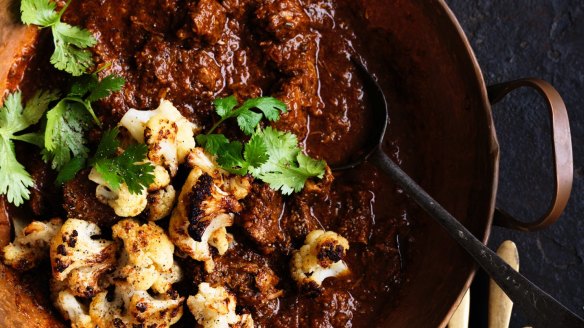Do you need to brown meat before adding it to a slow-cooker?

Is it necessary to brown meat for stews first when you are using a slow-cooker? K. Marshman
Until the industrial revolution, ovens in small homes were rare. Then came small charcoal or coal-fuelled iron stoves, which allowed home baking and slow cooking. Before then, in Lancashire (home of the Lancashire hot pot), the village bread oven was the original slow cooker for stews. After the daily bake was done and dusted, the housewives would take their straight-sided ceramic dishes filled with mutton and onions and topped with potatoes to the oven to cook their hot pots in the dying coals. There the floured and seasoned meat would slowly cook and break down, making a rich gravy. The meat was never browned. Browning meat does, as we have discussed here many times before, cause molecules in the proteins and sugars to recombine, creating flavoursome compounds that add richness and colour to a slow-cooked dish. That is called the Maillard reaction. Browning meat for slow-cooking is not essential but simply a matter of choice or tradition.
Why throw away the green part of a leek? M. Howe
The white part of the leek mostly grows underground. It does not contain chlorophyll, is a store for sugar and has not been hardened by the elements. Therefore it is more tender and cooks at a different rate to the green stems, which are tougher. In this way the two are not compatible to be cooked together as they require different cooking times. There is a raft of recipes such as vichyssoise that discard the greens. But once washed, the greens are perfectly edible and can be cooked like onions in dishes. For some suffering FODMAP reactions, the greens can be edible, while the sweeter white flesh may not.
Letters, corrections and apologies
Recently in Brain Food we discussed the healthiest way to prepare broccoli. The column went off like a frog in a sock. Here at the Brain Food Institute we received scores of emails and even a lovely letter written in spidery ink. S. Ferrie emailed with, "You forgot to mention that many of the vitamins and antioxidants in broccoli are fat-soluble so ideally your delicious lightly steamed or stir-fried broccoli should be served with a little bit of healthy fat such as olive oil, butter or nuts and seeds so that these fat-soluble vitamins can be released and made available to the eater." We also recently wrote about not softening butter in a microwave, to which A. Drummond replied, "In contrast to your assertion that butter cannot be effectively softened in the microwave, I find that 60 seconds on a microwave's "defrost" setting will render 250g butter perfectly primed for creaming with sugar. In contrast, several hours at winter room temperature leaves butter still unhelpfully cool and the cook hot and bothered by a frustrating delay."
Send your vexing culinary conundrums to brainfood@richardcornish.com.au or tweet to @Foodcornish
